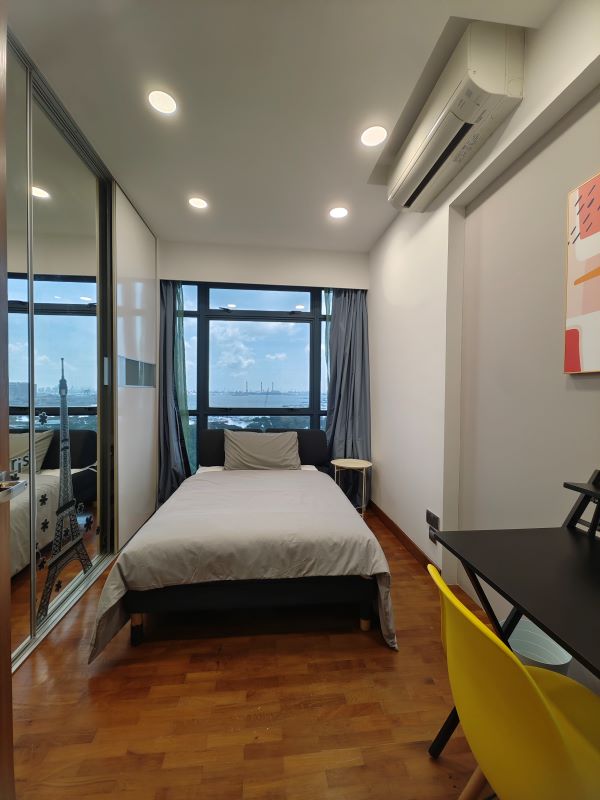The Rise of Co-Living Spaces in Singapore
Introduction
The co-living concept, a relatively new trend in the housing market, has been gaining significant traction in Singapore. Co-living spaces essentially offer shared living arrangements where residents have their own private bedrooms but share common areas such as kitchens, living rooms, and sometimes even bathrooms. This unique living arrangement is not just about sharing a living space, but it’s also about fostering a sense of community among its residents. The rise of co-living spaces in Singapore is largely driven by changing housing trends, where more and more people are seeking affordable, convenient, and community-oriented living environments. This trend is not only transforming the real estate landscape in Singapore, but it’s also reflecting the changing needs and preferences of its residents.
The growth of co-living spaces in Singapore is also in line with global trends, with similar concepts being adopted in major cities around the world. This international trend underscores the universal appeal of co-living, which combines the benefits of private and communal living. Whether it’s young professionals seeking a sense of community, students looking for affordable housing close to their universities, or families wanting more flexible accommodation options, co-living spaces in Singapore are catering to a diverse range of needs.
The Popularity of Co-Living in Singapore : The Rise of Co-Living Spaces in Singapore
The popularity of co-living spaces in Singapore has been growing steadily over the years, with increasing demand from different segments of the population. One of the main factors contributing to their popularity is the provision of temporary housing options for individuals who are waiting for their new homes to be ready. This is particularly beneficial for those who need a place to stay during the interim period. For instance, individuals who have sold their previous homes and are waiting for their new homes to be completed can find temporary accommodation in co-living spaces. This eliminates the need for them to commit to a long-term lease or spend on expensive short-term accommodation options.
Furthermore, co-living spaces have become a popular choice among expatriates returning to Singapore for work. These individuals often seek housing options that offer flexibility, convenience, and a sense of community. Co-living spaces provide them with a ready-made community and a convenient living arrangement, allowing them to settle back into life in Singapore with ease. Moreover, many co-living spaces are located in prime areas of the city, providing residents with easy access to amenities and transport links. This location advantage makes co-living an even more attractive option for expatriates and other individuals seeking convenient and centrally-located accommodation options.
Impact of COVID-19 on Co-Living Spaces
Despite the challenges posed by the COVID-19 pandemic, co-living spaces in Singapore have maintained a steady demand. The pandemic has, in fact, underscored the importance of connection and conducive work-from-home environments, which co-living spaces can provide. The communal living areas and shared facilities in these spaces offer opportunities for social interaction and networking, which have become even more valued during times of social distancing. For example, residents in co-living spaces can still have access to shared workspaces and common areas where they can safely interact with others while adhering to social distancing guidelines.
These shared workspaces often come equipped with high-speed internet and other necessary facilities, making them ideal for remote work. This has made co-living spaces an attractive option for individuals who are looking for a sense of community and the opportunity to meet new people, even during a pandemic. Moreover, many co-living operators have adapted their services to the new normal by implementing strict cleaning and safety protocols to ensure the health and safety of their residents. These measures have further increased the appeal of co-living spaces during the pandemic, as residents can live and work in a safe and conducive environment.
The Market for Co-Living Spaces in Singapore
The market for co-living spaces in Singapore has been thriving, with occupancy rates consistently exceeding 95%. This high occupancy rate indicates the strong demand for co-living spaces in the city-state. Rental prices in the co-living market are in line with overall rental price trends and are still more affordable compared to the open market. The affordability of co-living spaces is largely due to the cost-sharing model adopted by co-living operators. By sharing the cost of rent among multiple residents, co-living operators can offer competitive rates that are more affordable for individual residents.
In addition to affordability, co-living spaces are also known for their flexibility. Unlike traditional rental options, co-living spaces often offer flexible lease terms, allowing residents to choose the duration of their stay. This flexibility makes co-living spaces an attractive option for individuals with varying housing needs, whether they’re looking for a short-term stay or a longer-term accommodation option. The market for co-living spaces in Singapore is expected to continue growing as more people become aware of and interested in this innovative housing option. As the demand for affordable and flexible housing in Singapore continues to rise, co-living spaces are poised to play a significant role in meeting this demand.
Co-Living Spaces Catering to Different Demographics
Co-living spaces in Singapore are not just popular among young professionals and students, they’re also attracting a broader range of residents. For instance, young Singaporeans who have lived overseas are turning to co-living spaces when they return to Singapore. Having experienced shared living arrangements during their time abroad, these young individuals find co-living spaces a familiar and appealing housing option. These spaces provide them with an opportunity to live in a shared environment where they can connect with like-minded individuals who have had similar experiences.
Interestingly, there has been an increasing trend of co-living spaces catering to small families as well. These spaces provide spacious rooms and even full apartments that can comfortably accommodate families. For example, co-living operator, lyf, offers a range of room types, including large rooms and apartments that are suitable for families. These family-friendly co-living spaces are often equipped with child-friendly amenities and are located in residential areas with easy access to schools and parks. This makes co-living spaces a viable and attractive housing option for families seeking affordable and convenient accommodation options in Singapore.
Benefits of Co-Living Spaces : The Rise of Co-Living Spaces in Singapore
Co-living spaces offer numerous benefits, making them an attractive housing option for a wide range of individuals. One of the primary benefits is the flexibility they offer. Co-living spaces provide flexible lease terms, which is a significant advantage for residents who require temporary accommodation or do not wish to commit to a long-term lease. For example, a professional on a six-month contract in Singapore can find suitable accommodation in a co-living space without having to sign a traditional one or two-year lease.
In addition to flexibility, co-living spaces are often more affordable compared to traditional rental options, especially in prime locations like Singapore’s central business district. This affordability allows individuals to live in desirable areas without having to pay exorbitant rental prices. Furthermore, co-living spaces offer convenient and communal living environments, with shared facilities and amenities that foster a sense of community and provide opportunities for socializing and networking. These shared amenities often include fully-equipped kitchens, lounges, and sometimes even gyms and pools, providing residents with a well-rounded and enjoyable living experience.
Beyond the physical amenities, co-living spaces also offer a sense of community and social interaction. Many co-living operators organize social events and activities for their residents, fostering a vibrant and engaging community. These events provide residents with opportunities to socialize, network, and form meaningful relationships with their co-residents. This sense of community is one of the key appeals of co-living spaces, especially for individuals who are new to the city and looking to build a social network.
Co-Living Spaces as a Solution for Temporary Accommodation
One of the key roles of co-living spaces in Singapore’s housing market is providing temporary accommodation. These spaces serve as a convenient housing option for individuals who are waiting for their new homes to be ready. Instead of having to find short-term rental options or staying in expensive serviced apartments, these individuals can find comfortable and affordable accommodation in co-living spaces. This not only provides them with a place to stay during the waiting period but also allows them to enjoy the benefits of co-living, such as the sense of community and shared amenities.
Co-living spaces also serve as a convenient option for expatriates returning to Singapore. Instead of having to commit to a long-term lease or stay in a hotel, these individuals can find temporary accommodation in co-living spaces while they settle back into life in Singapore. For example, an expatriate returning to Singapore for a short-term assignment can find a co-living space that offers a flexible lease term, allowing them to live comfortably during their stay without having to worry about long-term housing commitments.
The Future of Co-Living Spaces in Singapore
The future of co-living spaces in Singapore looks very promising. As societal attitudes towards housing continue to evolve, co-living spaces are expected to play an increasingly significant role in meeting Singapore’s housing needs. For instance, co-living operators are expected to expand their offerings to cater to different demographic groups, including seniors and families. The potential acceptance of co-living for seniors represents a significant development in Singapore’s housing landscape, as it opens up a new market for co-living operators and provides seniors with a viable and appealing housing option.
Furthermore, as housing trends continue to evolve, co-living is likely to become even more common among young adults seeking community and new experiences. For example, with the rise of remote work and flexible work arrangements, more young adults may opt for co-living spaces that provide shared workspaces and a conducive work-from-home environment. As these trends continue to unfold, co-living spaces in Singapore are set to adapt and evolve to meet the changing needs and preferences of their residents.
The Role of Hotels in the Co-Living Market
The growing demand for co-living spaces in Singapore has also led to an interesting development in the hotel industry.Several hotels in Singapore are transforming their spaces into co-living areas to cater to the growing demand for communal living options. This trend allows hotels to diversify their offerings and tap into the growing market for co-living spaces in Singapore. For example, a hotel might convert underutilized meeting rooms or guest rooms into co-living spaces, providing guests with a unique accommodation option that combines the services and amenities of a hotel with the communal living experience of a co-living space.
Moreover, converting hotels into co-living spaces involves less financial risk for investors compared to building new co-living properties. This makes it an attractive option for investors looking to enter the co-living market. The transformation of hotels into co-living spaces also represents a creative and innovative response to changing housing trends, demonstrating the potential for different sectors to adapt and innovate in response to societal changes.
Advantages of Co-Living for Landlords
From a landlord’s perspective, co-living spaces offer several advantages. By partnering with co-living operators, landlords can ensure a steady income stream through fixed room rates. This stability and predictability are beneficial for landlords as they do not have to worry about fluctuations in rental prices or the hassle of finding tenants. Furthermore, with the increasing demand for co-living spaces, landlords can expect a higher occupancy rate for their properties.
Co-living operators are also actively seeking more homes to lease in order to cater to the increasing demand. This heightened demand presents an opportunity for landlords to rent out their properties quickly and efficiently. However, if rental prices in the open market continue to spike, landlords may choose to rent their properties directly to the open market rather than through co-living operators. This decision would depend on the specific circumstances and preferences of the individual landlords.
Impact of Co-Living on Rental Prices
While rental prices in the co-living market are in line with overall rental price trends, co-living spaces in Singapore are still more affordable compared to the open market. This affordability is largely due to the cost-sharing model adopted by co-living operators. By sharing the cost of rent among multiple residents, co-living operators can offer competitive rates that are more affordable for individual residents. This affordability makes co-living spaces an attractive option for individuals looking for cost-effective housing solutions in Singapore.
Moreover, as the demand for co-living spaces continues to grow, it is possible that the increased supply in the market may help stabilize rental prices, making housing more accessible to a wider range of individuals. For instance, a professional working in Singapore’s central business district might find the rental prices of traditional apartments in the area prohibitive. However, by opting for a co-living space, they can enjoy a prime location at a fraction of the cost, thanks to the cost-sharing model of co-living.
Conclusion
The rise of co-living spaces in Singapore reflects the changing housing trends and the evolving needs and preferences of its residents. From providing a sense of community to offering affordable and flexible housing options, co-living spaces are transforming the way people live in the city-state. Whether it’s young professionals, students, families, or even seniors, co-living spaces are catering to a diverse range of needs and contributing significantly to the diversity of Singapore’s housing landscape.
With the continued growth of the co-living market, it is clear that co-living spaces are more than just a passing trend. They represent a significant shift in the housing market, offering innovative and adaptable solutions that meet the changing needs and lifestyles of today’s residents. For those interested in exploring co-living options further, the Condos in Singapore website at buycondo.sg/condos offers a comprehensive list of available co-living spaces in the city-state. From flexible lease terms and affordable rates to community events and shared amenities, there is a co-living space in Singapore that caters to every need and preference. So why not explore the world of co-living and experience a new way of living in Singapore?













